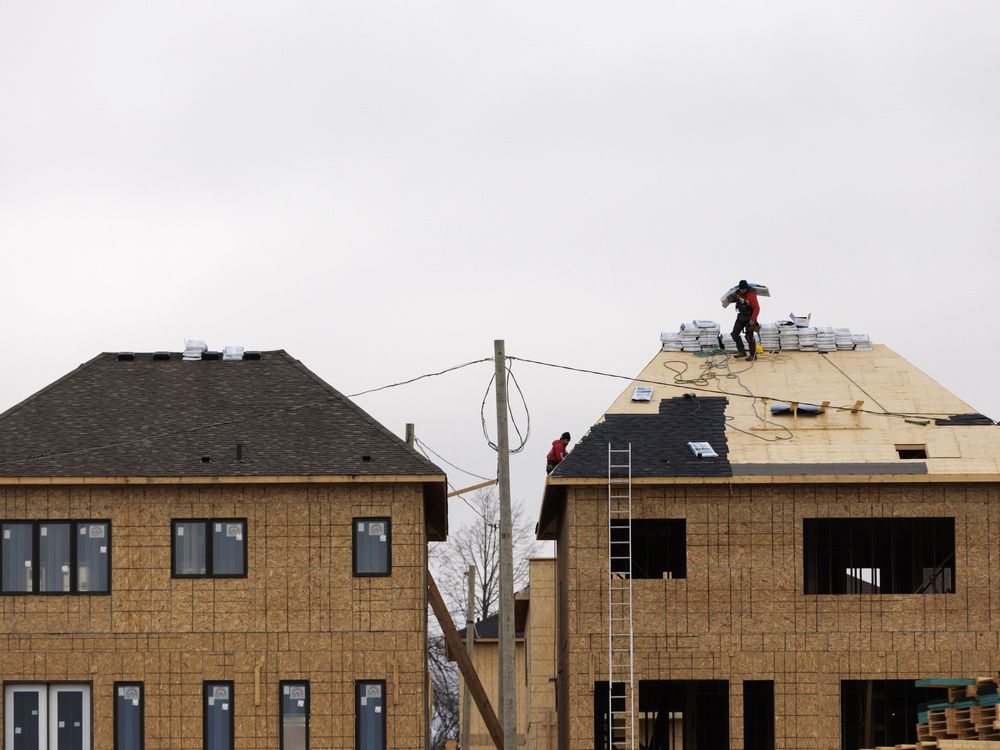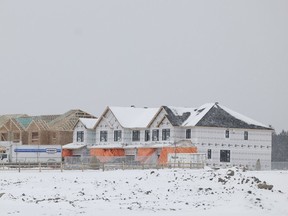Top Stories
Canada Housing Supply Gap Widening as CMHC Adjusts Targets

URGENT UPDATE: The Canada Mortgage and Housing Corporation (CMHC) has just announced a significant shift in its housing affordability targets, revealing that Canada’s housing supply gap is widening, not narrowing. In a stark departure from its original goal of restoring affordability by 2030, the CMHC now projects a more modest aim of 430,000 to 480,000 housing starts annually over the next decade.
In its latest update, released earlier today, CMHC acknowledged that the country fell short in 2022, with only 245,000 housing units built—less than half of the necessary annual rate of 500,000 needed to regain early-2000s affordability. Now, the agency is shifting focus from completions to housing starts, reflecting ongoing bottlenecks that threaten to deepen the crisis.
The implications are profound: CMHC’s new target aims to restore affordability only to 2019 levels, which is already proving unrealistic. The Canadian Renters Report indicates that 40% of renters are delaying homeownership, expecting further price declines. This sentiment, coupled with rising materials and labor costs, exacerbates the housing crisis.
“Unless delays are reduced, efforts to double housing starts will struggle to gain traction,” warns the Canadian Home Builders’ Association. Currently, obtaining a building permit in Canada takes an average of 250 days, nearly three times longer than in the United States. In major cities like Toronto and Hamilton, this delay can stretch to 25 and 31 months, respectively.
The CMHC’s projections highlight the urgent need for action. With rising unemployment, geopolitical instability, and ongoing economic pressures, the housing market is increasingly unstable. If current trends persist, homebuyers could face a staggering 33% increase in ownership costs by 2035.
The federal government has recognized the challenges, aiming to reduce costs and speed up approvals. However, progress has been slow, with municipalities relying on development charges to fund infrastructure. As the private market reacts to diminished demand, builders are pausing or canceling projects altogether.
In contrast, public and non-market housing options remain limited, with 245,900 households on the waitlist for social and affordable housing as of 2024. While innovative solutions such as prefabrication could expedite construction, the lack of consistent demand in the current market hampers these efforts.
With the stakes higher than ever, Canada risks losing credibility in addressing one of its most pressing policy challenges. As CMHC continues to adjust its housing targets, the urgency for effective action is palpable. The ongoing housing affordability crisis demands immediate attention and a reassessment of strategies to meet the needs of Canadians.
Watch for further updates as the situation develops.
-

 Politics4 weeks ago
Politics4 weeks agoSecwepemc First Nation Seeks Aboriginal Title Over Kamloops Area
-

 World5 months ago
World5 months agoScientists Unearth Ancient Antarctic Ice to Unlock Climate Secrets
-

 Entertainment5 months ago
Entertainment5 months agoTrump and McCormick to Announce $70 Billion Energy Investments
-

 Science5 months ago
Science5 months agoFour Astronauts Return to Earth After International Space Station Mission
-

 Lifestyle5 months ago
Lifestyle5 months agoTransLink Launches Food Truck Program to Boost Revenue in Vancouver
-

 Technology3 months ago
Technology3 months agoApple Notes Enhances Functionality with Markdown Support in macOS 26
-

 Lifestyle3 months ago
Lifestyle3 months agoManitoba’s Burger Champion Shines Again Amid Dining Innovations
-

 Top Stories2 months ago
Top Stories2 months agoUrgent Update: Fatal Crash on Highway 99 Claims Life of Pitt Meadows Man
-

 Politics4 months ago
Politics4 months agoUkrainian Tennis Star Elina Svitolina Faces Death Threats Online
-

 Sports5 months ago
Sports5 months agoSearch Underway for Missing Hunter Amid Hokkaido Bear Emergency
-

 Politics5 months ago
Politics5 months agoCarney Engages First Nations Leaders at Development Law Summit
-

 Technology5 months ago
Technology5 months agoFrosthaven Launches Early Access on July 31, 2025





















